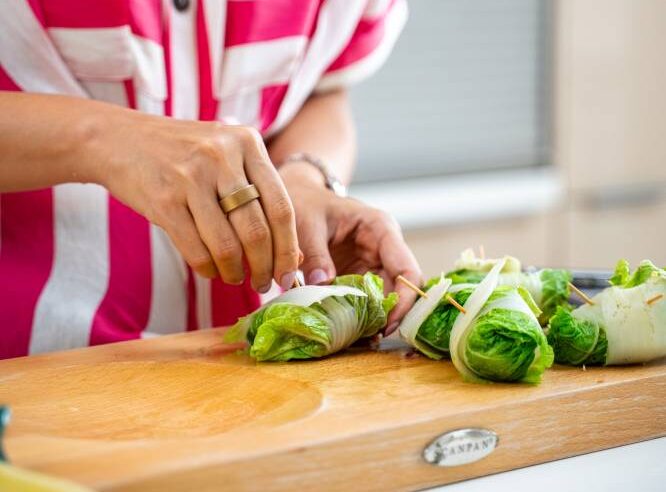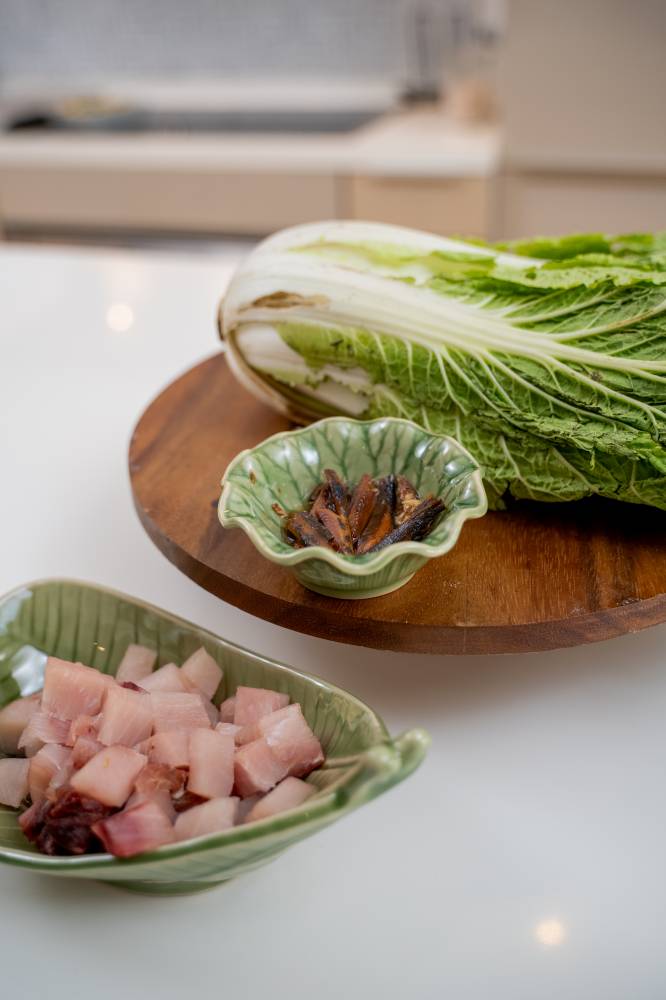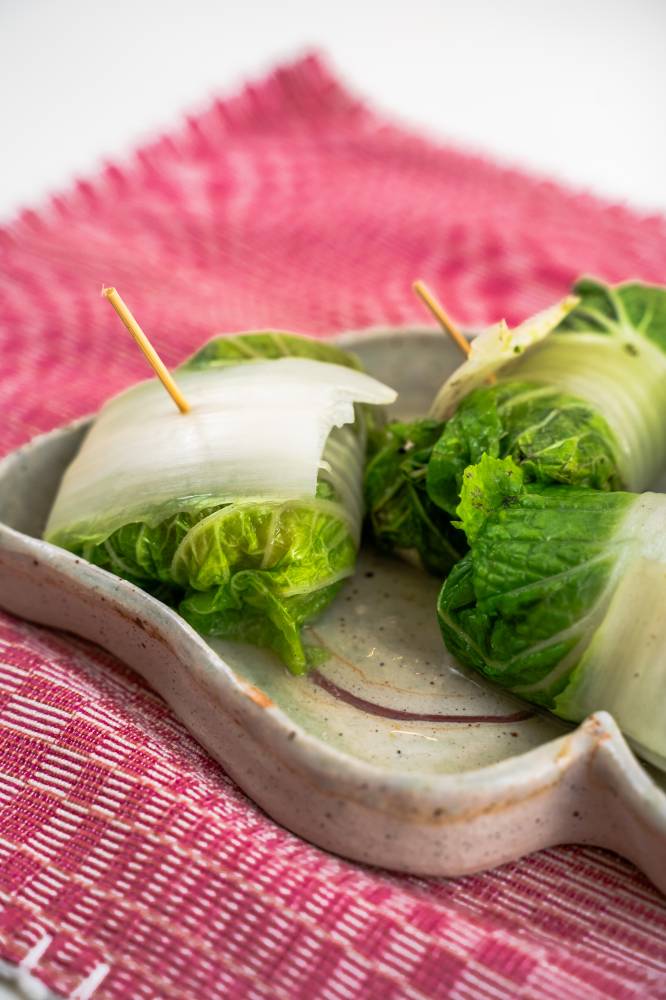Wrapped in greenery: Cooking with leaf wraps

Leaf-wrapping is one of the oldest cooking techniques, prized not only for its practicality but also for the way it transforms food. When food is encased in a leaf and exposed to heat—whether through steaming, grilling, or baking—it cooks in its own juices. The leaf creates a sealed environment that traps steam, tenderizes the food, and infuses it with subtle aromas and flavors unique to the plant.
The result? Food that’s naturally moist, fragrant, and layered with complexity.
Different countries, different leaves
In tropical Asia and the Pacific, banana leaves are indispensable. They’re enormous, flexible, and waterproof, making them ideal for wrapping rice, fish, and meat. In the Philippines, suman—sticky rice cooked with coconut milk—is rolled and tied in banana leaves before being steamed, lending the dessert a grassy, almost smoky aroma. In southern India, banana leaves become edible platters, laid out for festive meals known as sadhya.
When grilled, the banana leaf chars lightly, releasing a distinctive scent that perfumes the food from within. Dishes like Thailand’s hor mok (steamed fish curry) or Indonesia’s pepes ikan (spiced fish in banana leaf) are living proof that the leaf is as much a spice as it is a wrapper.
Across the oceans, other leaves take center stage. In Latin America, corn husks cradle tamales, a dish of masa dough filled with meat or beans and steamed until firm. The husk not only protects the dough from drying out but also imparts a subtle sweetness, reminiscent of roasted corn.

In the Mediterranean, the tender leaves of the grapevine are blanched and wrapped around seasoned rice and minced meat to make dolmas. These leaf parcels, simmered in olive oil and lemon, are delicate and aromatic—proof that simplicity can yield deep satisfaction.
In Polynesia, ti leaves (from the Cordyline fruticosa plant) are used to wrap food before it’s baked underground in an earth oven, or imu. The leaves’ waxy coating withstands high heat, sealing in moisture and adding a faintly floral note.
In China, lotus leaves wrap lo mai gai—glutinous rice with chicken, mushrooms, and Chinese sausage—before it’s steamed. As the rice cooks, it soaks up the tea-like fragrance of the lotus leaf, creating an unmistakable aroma of comfort and tradition.
Beyond their culinary benefits, leaf wrappers are one of the world’s most sustainable tools. They’re biodegradable, renewable, and entirely plastic-free. As chefs and home cooks rediscover ancient techniques in the face of environmental concerns, leaves are making a comeback—not just for flavor but also for conscience.

A fresh way to eat vegetables
My cooking style is about using what is most abundant, and while in Ormoc, I found that Chinese cabbage, or wombok, was plentiful. In Manila, one never finds such large whole womboks; what we are left with are the whiter inner parts, as suppliers peel off unsightly outer layers. It is precisely these layers that make the perfect wrappers.
Many Filipinos struggle with eating enough vegetables in a day, and using a large leafed vegetable is one way to add fiber, vitamins, and minerals to a diet. Unlike using banana or betel leaves as a wrapper, the wombok provides a neutral flavor and acts more as a vessel to carry the inside stuffing. In one version of the recipe here, I added cooked monggo to the minced fish to act as a binder for the spices and fish. The monggo’s natural sticky texture holds the meal together, almost like a dumpling, but rich in protein.
I’ve found ginger to be a very versatile spice in that when it’s used as a seasoning in a broth or soup, it adds a very warm note. In this recipe, ginger is what adds dimension to the entire dish, leaving you with a very clean taste. Coconut milk can also be added to this dish, adding a further layer of flavor.
I tend to use whatever fish I can find, as my cooking style is making do with whatever is affordable and available. In many situations, bangus is the cheapest and most affordable fish. The added layer of dilis, tuyo, or any available dry fish adds extra protein and a layer of saltiness to the dish, and combining this with the ginger’s zest cuts through the salty taste.
There’s something profoundly grounding about food cooked in leaves. It’s cooking that feels both primal and poetic—an act that connects us to the earth, to our ancestors, and to the wisdom of cultures that understood that the best wrapping doesn’t come from a store but from the tree outside your door.

Fish wombok dumplings
Ingredients
8 to 10 large wombok leaves
10 slivers of ginger
1 cup of any fish available, deboned and diced
1 red onion, diced
3 cloves of garlic
Directions
1. In a pot of hot water, quickly blanch the wombok leaves for 10 seconds each to slightly soften them. Leave the water boiling.
2. Add the ginger slices to the boiling water with a little salt.
3. Cool leaves on a plate.
4. Lay out the leaves one at a time.
5. In a bowl, combine the dried fish, fresh fish, garlic, and onion and mix well.
6. Scoop a tablespoon to two tablespoons of the fish mixture (depending on how large the leaf is) into the center of the wombok.
7. Fold the leaves on either side, then roll the wombok until you can form a secure parcel.
8. Slowly put it in the boiling water. Repeat until leaves are all used up.
9. Cook for 12 to 15 minutes, ensuring the fish is cooked through.
10. Slowly remove the dumplings from the water and serve.

















